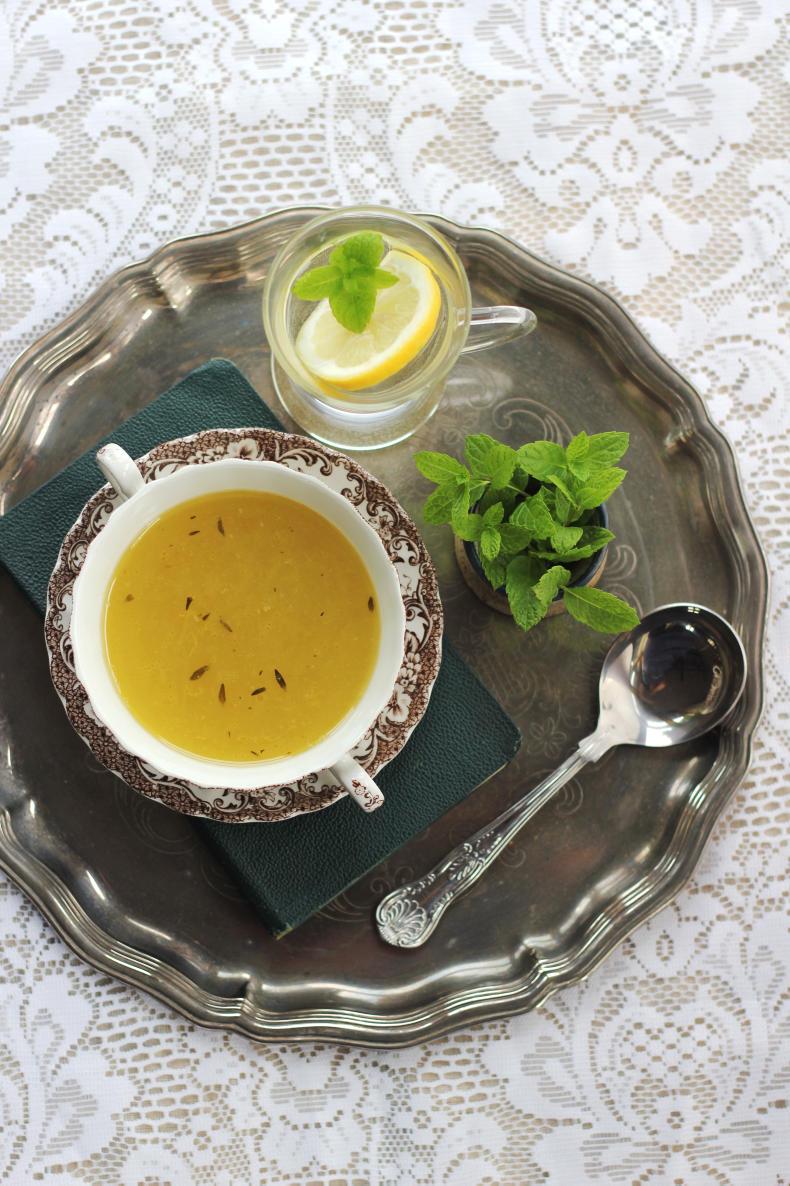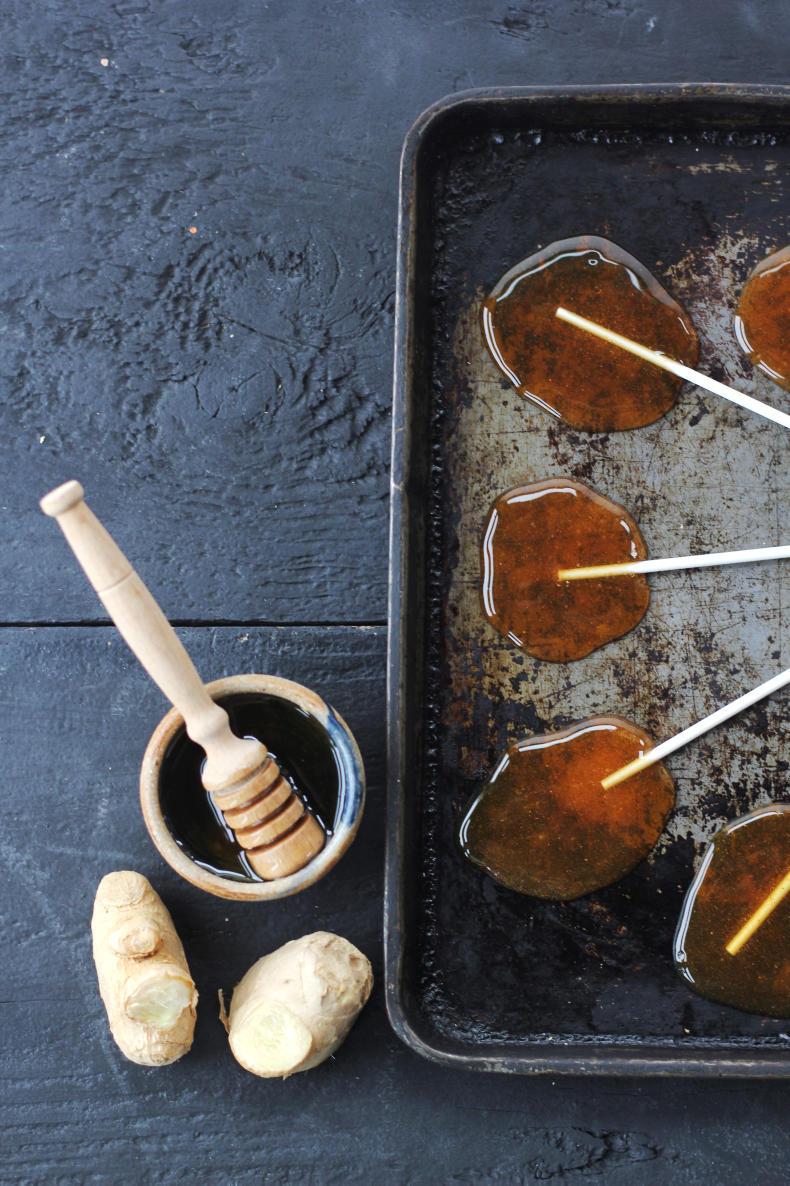Nausea is the feeling of sickness and discomfort in the stomach which often presents itself before vomiting, but it is also a symptom that can accompany numerous conditions. Gastric reflux, irritable bowel and migraine are some conditions which are well associated with nausea. Nausea can also be upon us when our body and mind need time to strengthen and recuperate, such as subsequent to a flu, any sort of an injury or even while we grieve. I feel extremely nauseous when I’ve a migraine and it can be so overwhelming that the very thought of food can be difficult to stomach. Thankfully, nausea is not an everyday occurrence for me, but it certainly makes me wonder how daily nutritional needs are met by anyone facing long-term nausea.
At a time when our body isn’t operating to full strength, food can sometimes seem less than appealing, so it’s important that the food we do choose to eat is nutritious, while also being palatable. Porridge, chicken broth or a simple homemade soup are all nourishing, and they are also easily digestible. It’s best to avoid foods that may encourage nausea such as fried or fatty foods, or ones with a strong flavour or scent.
Foods that are difficult to digest will also put extra pressure on a delicate digestive system. High-fibre foods can be difficult to tolerate, but if you’re dealing with a prolonged bout of nausea avoiding fibre would only introduce other digestive problems. Vegetables with a greater water content, such as cabbage, courgette or spinach, may be easier to digest. Cooking vegetables until soft and then puréeing them into a soup will also make them more tolerable.
It’s important to eat a little amount of food regularly as an empty stomach advocates a queasy tummy. Nibbling on dry biscuits, crackers or toast in between meals can also help to ease nausea.
When it’s difficult to tolerate food, it is crucial to maintain a good hydration level. Dehydration can cause nausea, but drinking copious amounts of water may not settle well in an already queasy tummy. Instead, sip regularly on small amounts throughout the day in a bid to keep hydrated and introduce other ways to increase fluid intake, such as sucking on ice cubes. Carbonated drinks are best avoided as they may cause bloating and in turn worsen the feeling of nausea.
Nausea can be worse when tired so, whenever possible, take plenty of rest. Always try to maintain an adequate fluid intake and inform your doctor if you’re complaining of prolonged stints of nausea.

Nessa Robins' chicken broth. \ Nessa Robins
Nourishing chicken broth
A bowl of homemade soup is nutritious, a good source of fluids and easy to digest, making it a good choice for anyone who is a little under the weather. This nutritious broth is light and easy to tolerate. It can be enjoyed as it is, but it can also be used as a nutritious base for any soup of your choice. This broth can be made in advance and stored in the fridge for up to five days.
3 or 4 chicken legs
3 carrots, peeled and roughly chopped
2 celery sticks, roughly chopped
2 garlic cloves, peeled and left whole
1 onion, peeled and cut into large chunks
1tbsp apple cider vinegar
1 tsp sea salt
1 bouquet garni – sprigs of parsley, thyme & 1 bay leaf tied together
1. Place all the ingredients for the broth into a large saucepan, cover with cold water and over a high heat bring to the boil. Once the broth begins to bubble, turn down the heat and simmer for two hours.2. Carefully remove the chicken to a plate. Allow the chicken to cool slightly, then cut all the meat from the bone and keep to use for sandwiches or another dish.3. Pass the broth through a sieve into a clean saucepan. 4. The broth is now ready to be served. Remove the herbs and leave the vegetables in the broth if you’d prefer to enjoy it as a light soup.5. If not using immediately, allow to cool quickly. Once cooled, the broth can be stored in the fridge for up to five days or can be frozen.Ginger pops
Ginger has been used for centuries to ease a queasy tummy. The trickiest part of making these pops is knowing when the honey is ready to set. A sugar thermometer makes this a lot easier, but the thickened honey can also be tested in an ice-cold glass of water. Using a saucepan with a spout makes easy work of pouring the mixture to make the pops. If you don’t have lollipop sticks, simply pour small blobs onto the greaseproof paper and when set, wrap in individual pieces of paper and store in a sealed container in the freezer.
200g honey
Cup of iced water
Small knob of fresh ginger
1/4 tsp ground ginger
1. Place the honey in a small saucepan over a low heat. Gently bring to the boil. Don’t stir it, but gently swirl the pan every so often.2. Simmer until the honey has turned a deep, golden colour. If you have a sugar thermometer, when the temperature reaches 150°C/300°F you can move onto the next step. Otherwise you can do the “hard ball” test by dropping a tiny spoonful of the boiling honey into a glass of iced water. Scoop it out of the glass and if it forms a ball between your fingers and stays hard, the honey is ready to set. You may need to do this a few times until you reach this stage.3. Finely grate the knob of ginger. Over a small sieve, take the grated ginger into your hand and squeeze through the juice to a small bowl. There will be approximately one teaspoon of juice.4. Add the ginger juice and the ground ginger to the saucepan and stir well to combine. 5. Place a layer of parchment paper on a baking tray. Place lollipop sticks on the paper, leaving plenty of room between each one. 6. Carefully pour the hot mixture over the top of each stick, creating a blob for the lollipop. 7. Leave to cool at room temperature until hard. Once cooled, wrap each one in parchment paper.
Nausea is the feeling of sickness and discomfort in the stomach which often presents itself before vomiting, but it is also a symptom that can accompany numerous conditions. Gastric reflux, irritable bowel and migraine are some conditions which are well associated with nausea. Nausea can also be upon us when our body and mind need time to strengthen and recuperate, such as subsequent to a flu, any sort of an injury or even while we grieve. I feel extremely nauseous when I’ve a migraine and it can be so overwhelming that the very thought of food can be difficult to stomach. Thankfully, nausea is not an everyday occurrence for me, but it certainly makes me wonder how daily nutritional needs are met by anyone facing long-term nausea.
At a time when our body isn’t operating to full strength, food can sometimes seem less than appealing, so it’s important that the food we do choose to eat is nutritious, while also being palatable. Porridge, chicken broth or a simple homemade soup are all nourishing, and they are also easily digestible. It’s best to avoid foods that may encourage nausea such as fried or fatty foods, or ones with a strong flavour or scent.
Foods that are difficult to digest will also put extra pressure on a delicate digestive system. High-fibre foods can be difficult to tolerate, but if you’re dealing with a prolonged bout of nausea avoiding fibre would only introduce other digestive problems. Vegetables with a greater water content, such as cabbage, courgette or spinach, may be easier to digest. Cooking vegetables until soft and then puréeing them into a soup will also make them more tolerable.
It’s important to eat a little amount of food regularly as an empty stomach advocates a queasy tummy. Nibbling on dry biscuits, crackers or toast in between meals can also help to ease nausea.
When it’s difficult to tolerate food, it is crucial to maintain a good hydration level. Dehydration can cause nausea, but drinking copious amounts of water may not settle well in an already queasy tummy. Instead, sip regularly on small amounts throughout the day in a bid to keep hydrated and introduce other ways to increase fluid intake, such as sucking on ice cubes. Carbonated drinks are best avoided as they may cause bloating and in turn worsen the feeling of nausea.
Nausea can be worse when tired so, whenever possible, take plenty of rest. Always try to maintain an adequate fluid intake and inform your doctor if you’re complaining of prolonged stints of nausea.

Nessa Robins' chicken broth. \ Nessa Robins
Nourishing chicken broth
A bowl of homemade soup is nutritious, a good source of fluids and easy to digest, making it a good choice for anyone who is a little under the weather. This nutritious broth is light and easy to tolerate. It can be enjoyed as it is, but it can also be used as a nutritious base for any soup of your choice. This broth can be made in advance and stored in the fridge for up to five days.
3 or 4 chicken legs
3 carrots, peeled and roughly chopped
2 celery sticks, roughly chopped
2 garlic cloves, peeled and left whole
1 onion, peeled and cut into large chunks
1tbsp apple cider vinegar
1 tsp sea salt
1 bouquet garni – sprigs of parsley, thyme & 1 bay leaf tied together
1. Place all the ingredients for the broth into a large saucepan, cover with cold water and over a high heat bring to the boil. Once the broth begins to bubble, turn down the heat and simmer for two hours.2. Carefully remove the chicken to a plate. Allow the chicken to cool slightly, then cut all the meat from the bone and keep to use for sandwiches or another dish.3. Pass the broth through a sieve into a clean saucepan. 4. The broth is now ready to be served. Remove the herbs and leave the vegetables in the broth if you’d prefer to enjoy it as a light soup.5. If not using immediately, allow to cool quickly. Once cooled, the broth can be stored in the fridge for up to five days or can be frozen.Ginger pops
Ginger has been used for centuries to ease a queasy tummy. The trickiest part of making these pops is knowing when the honey is ready to set. A sugar thermometer makes this a lot easier, but the thickened honey can also be tested in an ice-cold glass of water. Using a saucepan with a spout makes easy work of pouring the mixture to make the pops. If you don’t have lollipop sticks, simply pour small blobs onto the greaseproof paper and when set, wrap in individual pieces of paper and store in a sealed container in the freezer.
200g honey
Cup of iced water
Small knob of fresh ginger
1/4 tsp ground ginger
1. Place the honey in a small saucepan over a low heat. Gently bring to the boil. Don’t stir it, but gently swirl the pan every so often.2. Simmer until the honey has turned a deep, golden colour. If you have a sugar thermometer, when the temperature reaches 150°C/300°F you can move onto the next step. Otherwise you can do the “hard ball” test by dropping a tiny spoonful of the boiling honey into a glass of iced water. Scoop it out of the glass and if it forms a ball between your fingers and stays hard, the honey is ready to set. You may need to do this a few times until you reach this stage.3. Finely grate the knob of ginger. Over a small sieve, take the grated ginger into your hand and squeeze through the juice to a small bowl. There will be approximately one teaspoon of juice.4. Add the ginger juice and the ground ginger to the saucepan and stir well to combine. 5. Place a layer of parchment paper on a baking tray. Place lollipop sticks on the paper, leaving plenty of room between each one. 6. Carefully pour the hot mixture over the top of each stick, creating a blob for the lollipop. 7. Leave to cool at room temperature until hard. Once cooled, wrap each one in parchment paper.











SHARING OPTIONS